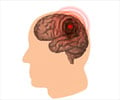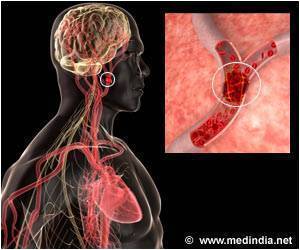The "puff of smoke" on a CT Angiogram is a hallmark of Moyamoya disease. Timely diagnosis and intervention are key to preventing severe neurological damage

‘Moyamoya disease affects fewer than 1 in 100,000 people but can lead to devastating strokes. Early diagnosis and treatment are crucial to survival. #moyamoya #strokeprevention #medindia’





Symptoms and Diagnosis of Moyamoya Disease
Moyamoya disease affects fewer than 1 in 100,000 people people and primarily affects children and adults between the ages of 10 and 40.It is characterized by the gradual narrowing of arteries that supply blood to the brain, forcing the brain to develop smaller, compensatory blood vessels. These vessels, however, are often inadequate, leading to a higher risk of stroke when the brain’s demand for blood exceeds the supply(1✔ ✔Trusted Source
Moyamoya Disease
Go to source).
The patient began experiencing a series of concerning symptoms, including a seizure followed by a decline in vision and weakness on the left side of his body.
A CT Angiogram revealed a characteristic “puff of smoke” appearance, confirming the diagnosis of Moyamoya disease. If the condition was left untreated, it could have led to recurring strokes, disability, or even death.
The medical team, recognizing the urgency of the situation, opted for a revascularization surgery. This complex procedure involved connecting a scalp artery to a brain artery to bypass the narrowed blood vessels and restore oxygen supply to the brain.
Advertisement
Surgical Intervention Gives New Hope in Moyamoya Case
The surgery was performed by Dr. Swaroop Gopal and Dr. Suraj Gopal at Aster Whitefield Hospital.“The surgery was intricate and required precise handling of delicate arteries,” said Dr. Swaroop Gopal. “The use of a microscope during the procedure ensured the best possible outcome.”
Advertisement
Moyamoya disease is known to affect both sides of the brain, so there is a possibility that further revascularization procedures may be required in the future.
“Early diagnosis and intervention are crucial for preventing the progression of this disease,” added Dr. Suraj Gopal. “Recognizing the symptoms early can prevent the recurrence of strokes and reduce the severity of neurological damage.”
The patient’s family, initially overwhelmed by the rarity of the disease, received consistent updates and support throughout the process. With the combined efforts of the medical team and the strength of his family, the prognosis is now optimistic.
He has recovered from the left-sided weakness and shown partial improvement in his vision, with further improvements expected as the bypass continues to function.
This case underscores the potential for successful treatment of Moyamoya disease when caught early and treated by skilled professionals. The patient’s recovery offers hope for other families dealing with similar diagnoses, showcasing how timely intervention and advanced medical techniques can significantly improve outcomes for patients with rare and life-threatening conditions.
Reference:
- Moyamoya Disease - (https://www.ninds.nih.gov/health-information/disorders/moyamoya-disease)
Source-Medindia










